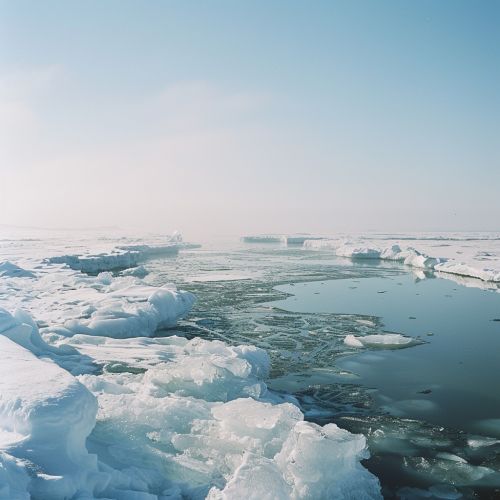Climate change in the Arctic
Introduction
Climate change in the Arctic refers to the pronounced alterations to the Arctic region's climate and ecosystems, attributed to global warming. Over recent years, the effects of climate change in the Arctic have been significant and are occurring at a faster rate than in most other regions of the world. This article delves into the various aspects of this phenomenon, including the causes, observed changes, impacts on wildlife and human communities, and potential future scenarios.
Causes of Arctic Climate Change
The primary cause of climate change in the Arctic is the increase in greenhouse gases, such as carbon dioxide and methane, in the Earth's atmosphere. These gases trap heat from the sun, causing the planet's average temperature to rise, a phenomenon known as global warming. The Arctic is particularly sensitive to this warming due to a process known as Arctic amplification.


Arctic Amplification
Arctic amplification is a positive feedback loop that accelerates warming in the Arctic region. When ice and snow melt, they reveal darker surfaces (such as ocean and land) that absorb more sunlight, leading to further warming and melting. This process exacerbates the effects of global warming in the Arctic.
Observed Changes
Numerous changes have been observed in the Arctic due to climate change, including rising temperatures, shrinking sea ice, melting glaciers, and thawing permafrost.
Rising Temperatures
The Arctic region has warmed at approximately twice the global rate over the past century. This rapid warming, known as Arctic amplification, has led to a host of other changes in the Arctic environment.
Shrinking Sea Ice
One of the most visible effects of Arctic warming is the reduction in sea ice. Satellite observations show that the extent and thickness of Arctic sea ice have decreased dramatically over the past few decades.
Melting Glaciers and Ice Sheets
In addition to sea ice, glaciers and ice sheets in the Arctic have been melting at an accelerated rate. This melting contributes to global sea-level rise, which can have devastating effects on coastal communities around the world.
Thawing Permafrost
Permafrost, permanently frozen ground that covers a large portion of the Arctic, has been thawing due to rising temperatures. This thawing can release large amounts of methane, a potent greenhouse gas, further contributing to global warming.
Impacts
The impacts of climate change in the Arctic are wide-ranging, affecting both wildlife and human communities.
Impacts on Wildlife
Arctic wildlife, such as polar bears, seals, and numerous bird species, are heavily dependent on sea ice for survival. The loss of sea ice due to warming threatens these species and can lead to a decrease in biodiversity.
Impacts on Human Communities
Human communities in the Arctic, many of which rely on hunting and fishing for subsistence, are also affected by climate change. Changes in ice conditions can make hunting and travel more dangerous, while shifts in species distributions can affect the availability of traditional food sources.
Future Scenarios
The future of the Arctic depends largely on global greenhouse gas emissions. If emissions continue to rise at their current rate, the Arctic could see ice-free summers by the middle of the century. This would have profound implications for Arctic ecosystems and communities, as well as for the global climate system.
